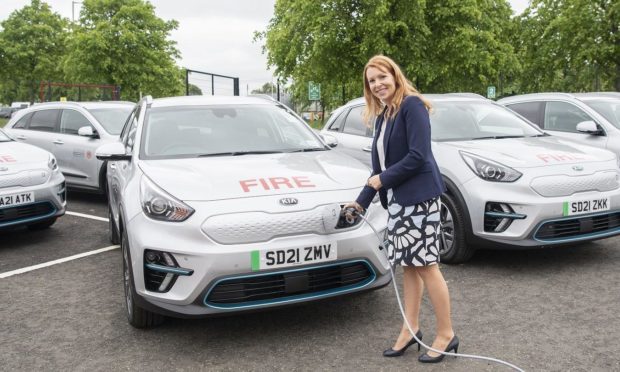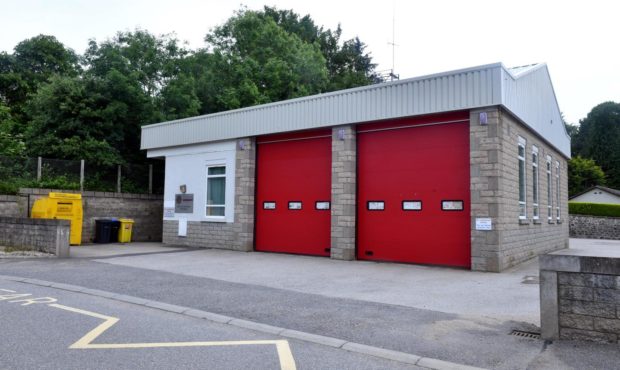A circuit of charge points have been switched on at fire stations across Scotland to support a new fleet of electric vehicles.
The electric cars have been introduced for firefighters in rural communities to help reduce carbon emissions in the country.
Chief Officer Martin Blunden said Scottish Fire and Rescue Service (SFRS) is “ready to play its part in Scotland’s net zero future”.
SFRS received £2 million of funding from the government as part of the Switched on Fleets initiative for the procurement of electric vehicles and charging infrastructure.
There are currently 98 charge points based at 61 Scottish sites, including Dyce, Banchory, Fort William and Lossiemouth, which will be increased with any further funding.
Committed to carbon neutral
Mr Blunden added: “This investment in low emission cars for our light fleet is testament to our commitment to move to a carbon neutral service.
“We are not only providing this circuit of electric vehicles and charge points for rural stations, but many of our buildings are being refitted with renewable energy technologies.
“Our staff will be supported to adapt to these new ways of working and maximise the use of this infrastructure.
“This £750,000 investment in water rescue crafts will be a real asset to our crews at the frontline of tackling extreme weather-related incidents such as flooding.
“We know our main sources of carbon emissions come from fueling our fleet as well as heating and powering our buildings. Taking this into account, we’ve pledged to reduce our emissions by six percent each year until 2030.”
The current electric fleet of 45 Renault Zoe models will be increased by 62 Kia E-Nero cars. They will be distributed among various rural hub stations and used by personnel to support retained and volunteer firefighters.
Strengthening SFRS’s response
Ash Denham, community safety minister, said: “The Scottish Government is committed to investing in the modernisation of the SFRS, most recently with a £8.7m increase in funding for 2021-22.
“The introduction of rural full-time posts by SFRS over the last three years has provided a significant boost for local economies in remote and rural areas and has been very positive in promoting fire safety and in strengthening the response capability and recruitment of retained firefighters.
“Thanks to funding provided by both the Scottish Government and Transport Scotland, these vital staff will now be able to travel in low carbon vehicles making a significant contribution to SFRS reducing its CO2 emissions in the year when Scotland hosts the COP26 conference on climate change.
“The new SFRS rescue boats are also a welcome development which will increase the capability of this crucial service.”
Enhancing resources
The addition of 12 new boats, to be increased by another eight in July, will help SFRS to keep communities safe. The new water rescue crafts will be mobilised to emergency calls involving people facing difficulties.
Mr Blunden said: “Our water rescue firefighters practice techniques with a wide range of specialist equipment that enable them to carry out their work safely and effectively and these new boats will enhance their capabilities.
“However, we would appeal to the public not to risk their lives in and around open water which can become very cold just a few feet under the surface and cause Cold Water Shock.
“Unless you are fully trained, competent and equipped to enter water courses, keep a safe distance this summer.”

